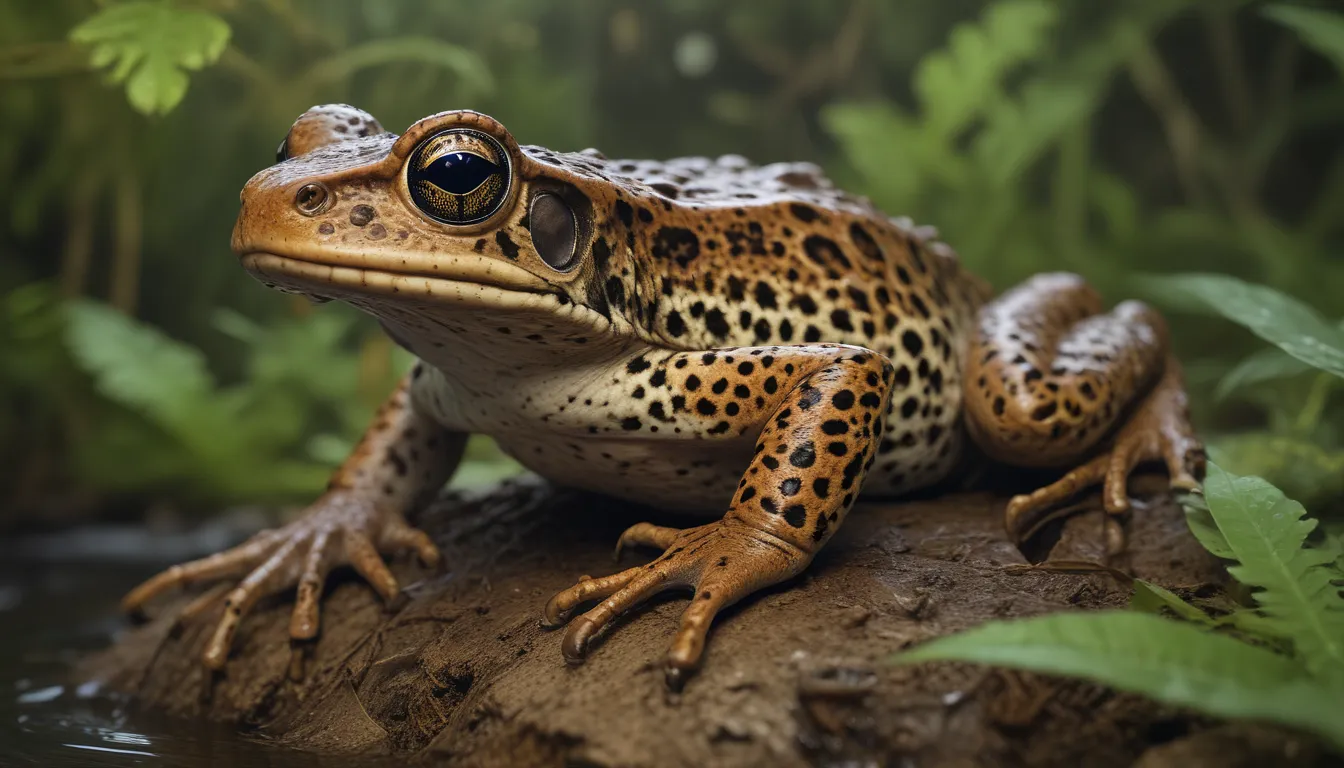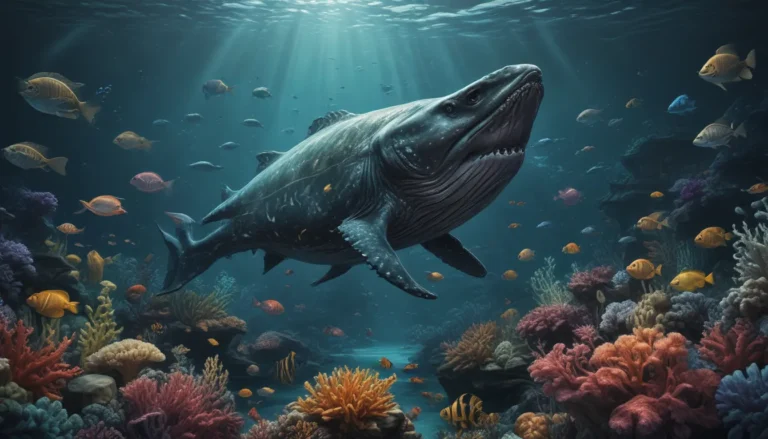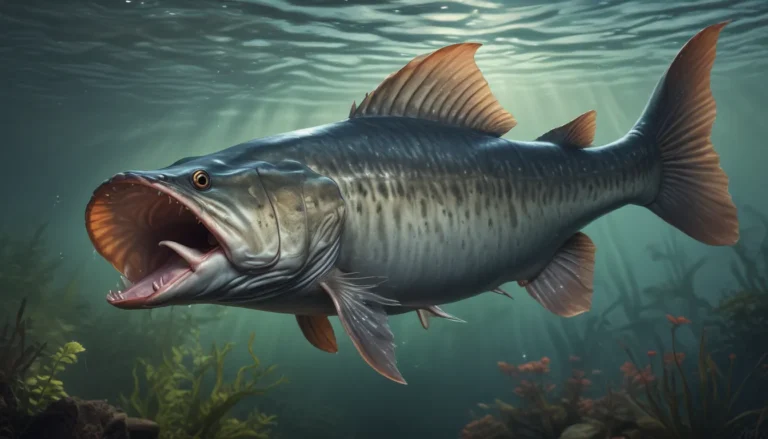The pictures we use in our articles might not show exactly what the words say. We choose these pictures to make you interested in reading more. The pictures work together with the words but don’t take their place. The words still tell you the important facts.
Are you a wildlife enthusiast eager to learn more about the intriguing inhabitants of the southeastern United States? Look no further than the gopher frog, also known as the dusky gopher frog, a captivating species that thrives in sandy pine forests and wetlands. With its unique appearance, behaviors, and adaptations, the gopher frog offers a glimpse into the diverse world of amphibians. Join us as we uncover 18 intriguing facts about these elusive creatures, shedding light on their habitats, habits, and the importance of conservation efforts to protect them.
Discovering the Habitat of Gopher Frogs
The gopher frog, scientifically known as Lithobates capito, calls the southeastern United States home. These secretive amphibians prefer to reside in sandy pine savannahs, longleaf pine forests, and ephemeral wetlands, making them an integral part of these unique ecosystems.
Unveiling Their Elusive Nature
Gopher frogs are renowned for their secretive and elusive behavior. They spend a majority of their time hidden underground in burrows created by other animals, such as gopher tortoises, hence their intriguing name.
Exploring Their Appearance
Measuring around 2-3 inches in length, the gopher frog boasts a stout body with a distinctive spotted pattern on its back. Their smooth skin ranges in color from gray to dark brown, adding to their unique and captivating appearance.
Listening to Their Vocalization
During the breeding season, male gopher frogs produce a unique call that resembles the sound of snoring. This vocalization helps them attract female mates and establish their territories in the wild, showcasing their communication skills.
Understanding Their Diet
Gopher frogs are considered opportunistic feeders with a diverse diet that includes insects, spiders, small crustaceans, and even other small amphibians. Their adaptable feeding habits contribute to their survival in their natural habitats.
Embarking on Their Life Cycle Journey
Gopher frogs undergo a typical amphibian life cycle, starting as eggs laid in wetland areas. The eggs hatch into tadpoles that metamorphose into juvenile frogs, eventually growing into adults. This fascinating transformation showcases the resilience of these amphibians.
Appreciating Their Threatened Status
The gopher frog is classified as a threatened species due to habitat loss and fragmentation caused by human activities. Conservation efforts are crucial in preserving their populations in the wild and ensuring their survival for future generations to admire.
Exploring Their Limited Range
Gopher frogs have a limited range and are only found in specific regions of Alabama, Georgia, Florida, and southeastern Mississippi, making them a unique and localized species within the southeastern United States.
Embracing Their Nocturnal Behavior
These nocturnal creatures are primarily active during the night, foraging for food and engaging in their breeding rituals under the cover of darkness. Their mysterious nature adds to the allure of studying these fascinating amphibians.
Digging into Their Burrowing Abilities
Gopher frogs are exceptional diggers with strong forelimbs adapted for excavation. Their burrowing behavior enables them to seek shelter from extreme temperatures and evade predators, showcasing their remarkable survival skills.
Delving into Their Long Lifespan
Under ideal conditions, gopher frogs can live up to 10-12 years in the wild. However, various factors such as predation and habitat quality can influence their lifespan, highlighting the delicate balance of nature.
Admiring Their Distinctive Eyes
The large and prominent eyes of the gopher frog provide excellent vision, aiding in detecting prey and potential threats in their surroundings. Their keen eyesight is a crucial adaptation that contributes to their survival in the wild.
Protecting Their Habitats
Efforts are underway to protect the habitats of gopher frogs, including the conservation of longleaf pine forests and the creation of artificial wetlands in suitable areas. Preserving these vital ecosystems is essential for the survival of these remarkable creatures.
Recognizing Their Natural Predators
Gopher frogs face predation from various species, including snakes, birds, small mammals, and larger amphibians. Their camouflage and burrowing behavior serve as key defense mechanisms against potential predators, showcasing their adaptive strategies.
Witnessing Their Mating Behavior
During the breeding season, male gopher frogs gather near wetland areas to attract female mates. Once a female selects a mate, they engage in amplexus, a mating behavior where the male fertilizes the female's eggs as she lays them, ensuring the continuation of their species.
Embracing Their Role as Environmental Indicators
Gopher frogs play a vital role in their ecosystems as indicators of habitat quality. Their presence or absence can signify the health of wetlands and pine forest ecosystems, making them essential components of their respective environments.
Upholding Their Protected Status
The gopher frog is protected under the Endangered Species Act, which prohibits the capture, trade, or harm of these amphibians without proper permits. These legal protections are essential for safeguarding the populations of gopher frogs in the wild.
Supporting Conservation Efforts
Several organizations and researchers are actively working on gopher frog conservation, including habitat restoration, captive breeding programs, and population monitoring. These collaborative efforts aim to ensure the long-term survival of these endangered amphibians.
In conclusion, the world of gopher frogs is filled with unique characteristics and significance that highlight the importance of protecting and preserving these elusive creatures. As threatened species facing habitat loss and other challenges, it is vital to raise awareness and take action to conserve the habitats of gopher frogs. By supporting conservation efforts and advocating for their protection, we can contribute to the conservation of biodiversity and the preservation of our natural world for generations to come.
Frequently Asked Questions
Q: What is the average lifespan of a gopher frog?
A: Gopher frogs have an average lifespan of around 10 to 12 years in the wild.
Q: How big can gopher frogs grow?
A: Gopher frogs can reach a length of up to 3.5 inches, with females being larger than males.
Q: Are gopher frogs venomous?
A: No, gopher frogs are not venomous and do not pose any threat to humans.
Q: Do gopher frogs have any predators?
A: Yes, gopher frogs are preyed upon by snakes, birds, and other larger amphibians in their natural habitats.
Q: How do gopher frogs reproduce?
A: Gopher frogs engage in explosive breeding, where males call out to attract females, leading to the fertilization of eggs in temporary pools of water.
Q: Why are gopher frogs considered endangered?
A: Habitat loss, pollution, and the draining of wetlands are the main factors contributing to the decline and endangerment of gopher frogs.
Our commitment to delivering accurate and engaging content is at the core of what we do. Each fact shared about gopher frogs is contributed by real users like you, ensuring a wealth of diverse insights and information. Rest assured that our dedicated editors meticulously review each submission to maintain the highest standards of accuracy and reliability. Trust in our dedication to quality and authenticity as you explore the captivating world of gopher frogs.






